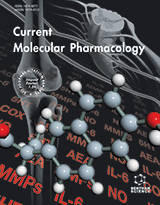Abstract
Estrogens have been recently postulated as potential agents in the development and progression of prostate cancer. Previous studies have demonstrated presence of both variants of estrogen receptor (ER); ER alpha (ERα) and ER beta (ERβ) in differing proportions between normal prostate and prostate cancer. It has been previously suggested that estrogens may either accelerate or inhibit growth of prostate cancer cell growth, depending on ER status. In particular, ERβ is considered to have a growth inhibitory role in prostate tissue. ERβ is significantly expressed in human prostate cancer cells, and hence it is considered a key factor for anti-cancer therapy. Therefore, various types of ERβ ligands have been investigated to clarify the mechanism of ERβ-mediated pathway of inhibitory effects on prostate cancer cells. Herein, we review recent examinations of ERs in prostate cancer, and the significance of ER mediated signaling pathways, with a focus on ERβ, as prospective therapeutic targets in prostate cancer.
Keywords: Estrogen receptor alpha(ERα), estrogen receptor beta (ERβ), GRP30, prostate cancer, steroid metabolism
Current Molecular Pharmacology
Title:Estrogen Receptor Expression and its Relevant Signaling Pathway in Prostate Cancer: A Target of Therapy
Volume: 5
Author(s): Yasuhiro Nakamura, Keely M McNamara and Hironobu Sasano
Affiliation:
Keywords: Estrogen receptor alpha(ERα), estrogen receptor beta (ERβ), GRP30, prostate cancer, steroid metabolism
Abstract: Estrogens have been recently postulated as potential agents in the development and progression of prostate cancer. Previous studies have demonstrated presence of both variants of estrogen receptor (ER); ER alpha (ERα) and ER beta (ERβ) in differing proportions between normal prostate and prostate cancer. It has been previously suggested that estrogens may either accelerate or inhibit growth of prostate cancer cell growth, depending on ER status. In particular, ERβ is considered to have a growth inhibitory role in prostate tissue. ERβ is significantly expressed in human prostate cancer cells, and hence it is considered a key factor for anti-cancer therapy. Therefore, various types of ERβ ligands have been investigated to clarify the mechanism of ERβ-mediated pathway of inhibitory effects on prostate cancer cells. Herein, we review recent examinations of ERs in prostate cancer, and the significance of ER mediated signaling pathways, with a focus on ERβ, as prospective therapeutic targets in prostate cancer.
Export Options
About this article
Cite this article as:
Nakamura Yasuhiro, M McNamara Keely and Sasano Hironobu, Estrogen Receptor Expression and its Relevant Signaling Pathway in Prostate Cancer: A Target of Therapy, Current Molecular Pharmacology 2012; 5 (3) . https://dx.doi.org/10.2174/1874467211205030008
| DOI https://dx.doi.org/10.2174/1874467211205030008 |
Print ISSN 1874-4672 |
| Publisher Name Bentham Science Publisher |
Online ISSN 1874-4702 |
 23
23
- Author Guidelines
- Bentham Author Support Services (BASS)
- Graphical Abstracts
- Fabricating and Stating False Information
- Research Misconduct
- Post Publication Discussions and Corrections
- Publishing Ethics and Rectitude
- Increase Visibility of Your Article
- Archiving Policies
- Peer Review Workflow
- Order Your Article Before Print
- Promote Your Article
- Manuscript Transfer Facility
- Editorial Policies
- Allegations from Whistleblowers
- Announcements
Related Articles
-
Inhibition of Glycolysis and Glutaminolysis: An Emerging Drug Discovery Approach to Combat Cancer
Current Topics in Medicinal Chemistry Synthesis and Cytotoxic Activities of a Curcumin Analogue and Its bis- Mannich Derivatives
Letters in Drug Design & Discovery Metal-free Reductive Coupling of Biphenyl Tosylhydrazones with Phenols or Benzyl Alcohols
Letters in Organic Chemistry Somatostatin and Octreotide on the Treatment of Acute Pancreatitis - Basic and Clinical Studies for Three Decades
Current Pharmaceutical Design Editorial [Hot Topic: Targeted Alpha Therapy – Part II (Guest Editor: Jorgen Elgqvist)]
Current Radiopharmaceuticals Current Evidence and Potential Mechanisms of Therapeutic Action of PEDF in Cervical Cancer Treatment
Current Molecular Medicine Hyaluronidase Inhibitors: A Biological and Therapeutic Perspective
Current Medicinal Chemistry TGF-beta Signaling in Cancer Treatment
Current Pharmaceutical Design Epigallocatechin-3-gallate(EGCG): Mechanisms and the Combined Applications
Combinatorial Chemistry & High Throughput Screening Epi-Drugs and Epi-miRs: Moving Beyond Current Cancer Therapies
Current Cancer Drug Targets Thrombomodulin Links Coagulation to Inflammation and Immunity
Current Drug Targets Mitochondria as a Therapeutic Target in Alzheimers Disease and Diabetes
CNS & Neurological Disorders - Drug Targets Green Synthesis and Antioxidant Activity of Novel γ-Cyano-α- hydroxyphosphonate Derivatives
Medicinal Chemistry Crosstalk between Gut Microbiota and Central Nervous System: A Focus on Alzheimer's Disease
Current Alzheimer Research The Role of Chromogranin A (CgA) in Monitoring Patients with Prostate Cancer Under Androgen Deprivation Therapy: Comparison with Prostatic Specific Antigen (PSA)
Current Radiopharmaceuticals Iron Chelators in Cancer Chemotherapy
Current Topics in Medicinal Chemistry Targeting the Ubiquitin-Mediated Proteasome Degradation of p53 for Cancer Therapy
Current Pharmaceutical Design Viral Vectors for Cancer Gene Therapy: Viral Dissemination and Tumor Targeting
Current Gene Therapy Immune Response and Immunotherapy: Live Attenuated Listeria monocytogenes (Lm)-LLO Immunotherapy for the Treatment of Prostate Cancer
Current Cancer Therapy Reviews Molecular Imaging in Optical Coherence Tomography
Current Molecular Imaging (Discontinued)


























